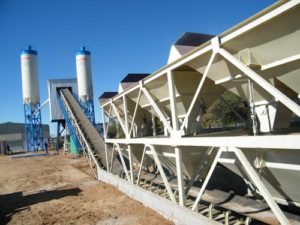Malfunction:
The misalignment of measurement is usually caused by the instability, drift and linear out-of-tolerance of the scales in use.+
Cause analysis:
It is often caused by three factors: human factor, electrical factor and other factors.
Treatment method:
1. Human factors are caused in the following three aspects:
In the process of batching, when the material in the hopper reaches the set value, the belt feeder will automatically stop (the pneumatic feeding door is closed), but at this time, some materials still fall into the hopper from the air, and the weight of this part of materials is called the drop. In order to guarantee the accuracy of batching, a drop value is usually set for the material to be corrected.
When discharging, stop discharging when the weight of the hopper reaches the initial set value. However, in actual production, wet materials will adhere to the weighing hopper. At this time, the batching controller cannot complete the unloading. Therefore, in production, in addition to artificially adding an error to the initial value to offset the weight of the adhesive, the error setting value is generally reduced by adding a vibrator to the weighing hopper.
Pay attention to the mounting position and even the direction of the sensor and the connection mode of the weighing part. If the mounting position is incorrect or the soft connection should be changed into hard connection, the measurement will be inaccurate.
2. The causes of electrical factors are as follows:
If the problem of external circuit is found, check whether the joint of each sensor is normal, whether there is any wear and tear, whether there is any damp phenomenon in the joint, etc. If the reading cannot be adjusted to the required number, or the reading becomes smaller after loading, please check if the wiring is wrong, such as positive and negative pole connection, signal line connection, power line connection on signal line, or other faults. If the reading display value is large, drift large, unstable, it may be the poor performance of the sensor, the sensor should be replaced. If you can’t tell whether it’s a sensor problem or a circuit problem, the best thing to do is to take the sensor out of the control room and test it directly on the measuring instrument.
A professional electrician can measure the corresponding resistance value of the sensor and the terminal voltage after adding electricity. Generally, the sensor has five lines, among which one is the shield line, two are the power supply excitation line and two are the signal line. If the corresponding resistance value or the voltage deviation is too large, the sensor is damaged and should be replaced. However, it should be noted that even if the resistance of the input and output is normal, it does not mean that there is no problem, because the sensor is very sensitive, most of the problem is that the sensor number is erratic, its resistance value is normal, but the use is unstable, mostly because of internal water inflow or strain gauge damage
Distinguish between the cause of the amplifier circuit (or meter) in the control box and the cause of the outer circuit. The method is very simple, using the commutation method, because in a control system there will be multiple identical measuring instruments, the problem will be switched to the normal road to try, if there is still a problem may be the problem of external circuit; Normal may be a problem with measuring instruments.
3. Other factors cause the weighing hopper to be stuck or other reasons cause the weighing hopper to be unable to move freely, which will result in the force error of the sensor when feeding. Although the setting value of ingredients after feeding is consistent with the weight display value, the actual material is much larger than or less than this value. Check and deal with lag and recalibrate if necessary.